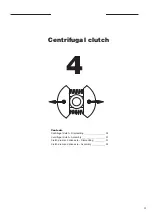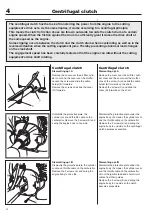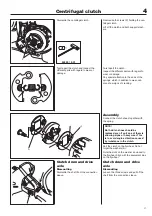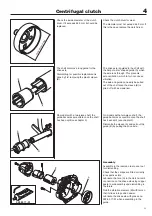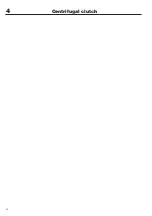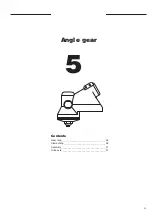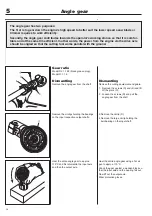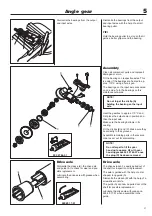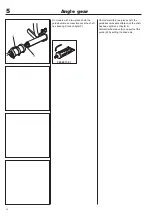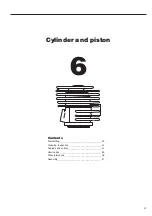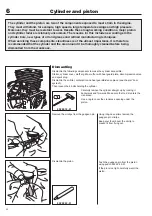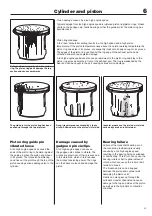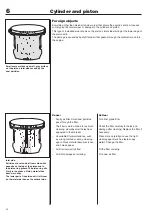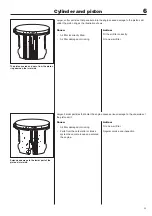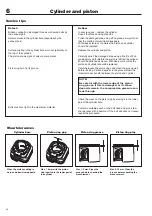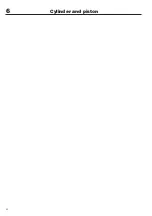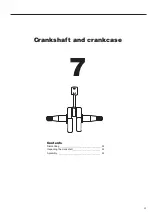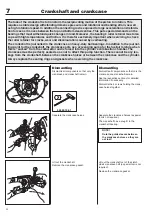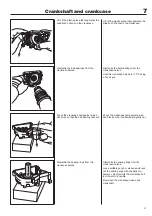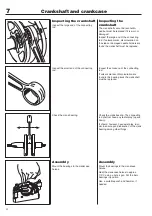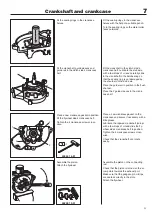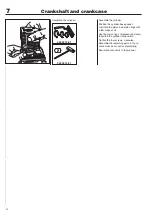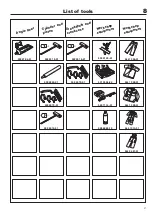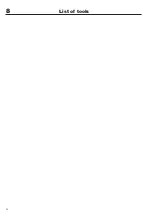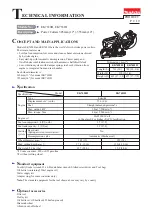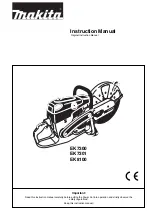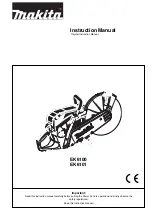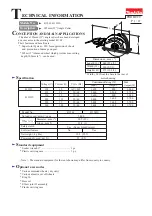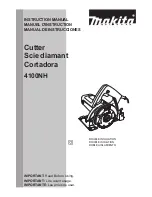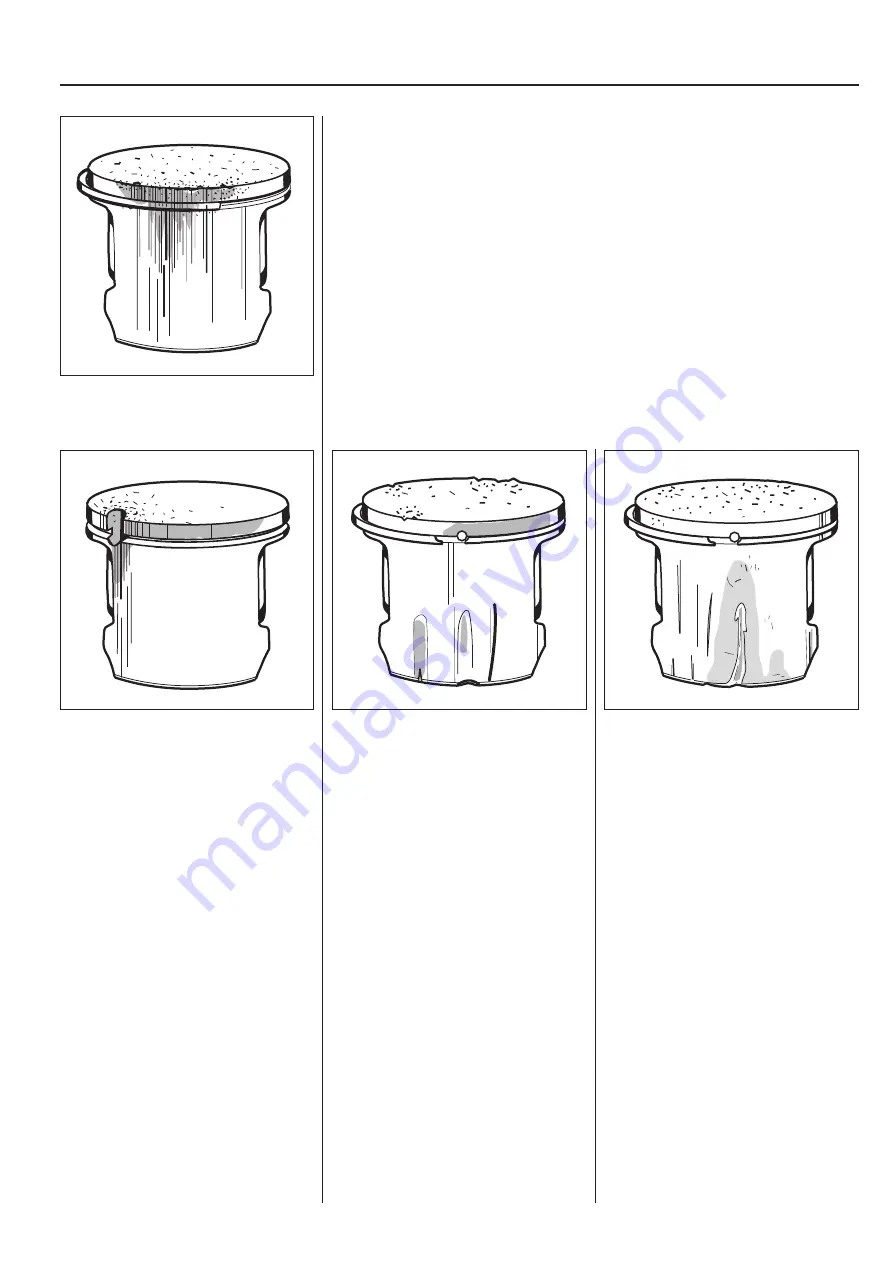
6
43
Cylinder and piston
Exhaust side damaged by a broken piston
ring. The piston ring parts damage the top
section and cause score marks.
Piston damage caused by a too high engine speed.
Typical damage from too high engine speed is ruptured piston ring/piston rings, broken
circlip on the gudgeon pin, faulty bearings or that the guide pin for the piston ring has
become loose.
Piston ring breakage
A too “lean” carburettor setting results in a too high speed and a high piston
temperature. If the piston temperature rises above the normal working temperature the
piston ring can seize in its groove, consequently it will not sit deep enough in its groove.
The edges of the piston ring can then hit the top edge of the exhaust port and be
smashed and also cause piston damage.
A too high engine speed can also cause rapid wear to the piston ring and play in the
piston ring groove primarily in front of the exhaust port. The ring is weakened by the
wear and can be caught in the port causing serious piston damage.
The guide pin for the piston ring has been
pushed up through the top of piston.
Irregular grooves on the piston’s inlet side
caused by a broken roller retainer.
Deep, irregular grooves caused by a loose
circlip. Shown here on the piston’s inlet side.
Piston ring guide pin
vibrated loose
A too high engine speed can cause the
ends of the piston ring to hammer against
the guide pin when the piston ring moves
in its groove. The intensive hammering
can drive out the pin through the top of the
piston causing serious damage also to the
cylinder.
Damage caused by
gudgeon pin circlips
A too high engine speed can cause
the gudgeon pin circlips to vibrate. The
circlips are drawn out of their grooves due
to the vibrations, which in turn reduces
the circlips’ tensioning power. The rings
can then become loose and damage the
piston.
Bearing failure
Failure of the crankshaft bearing or on
the connecting rod bearing is usually
caused by a too high engine speed,
resulting in the bearing being overloaded
or overheating. This in turn can cause the
bearing rollers or ball to glide instead of
rotate, which can cause the roller or ball
retainer to break.
The broken debris can be trapped
between the piston and cylinder wall,
damaging the piston skirt.
Debris can also pass up through the
cylinder’s transfer channels and cause
damage to the top and sides of the piston
as well as to the cylinder’s combustion
chamber.
Summary of Contents for 241R
Page 1: ...Workshop manual 241R 241RJ English ...
Page 35: ...4 34 Centrifugal clutch ...
Page 49: ...6 48 Cylinder and piston ...
Page 59: ...58 8 List of tools ...
Page 62: ...2008W37 115 11 96 26 ...

